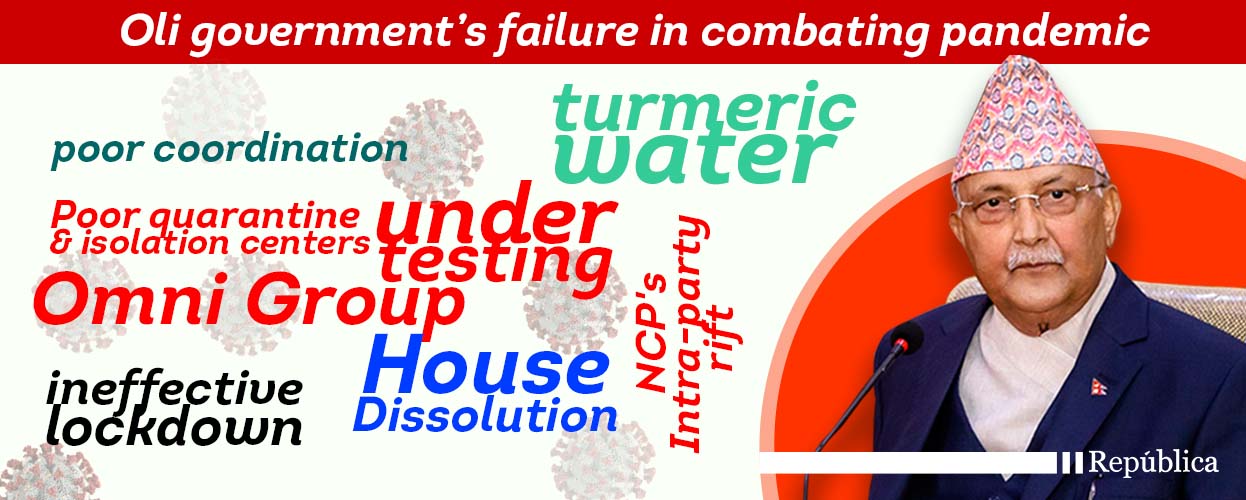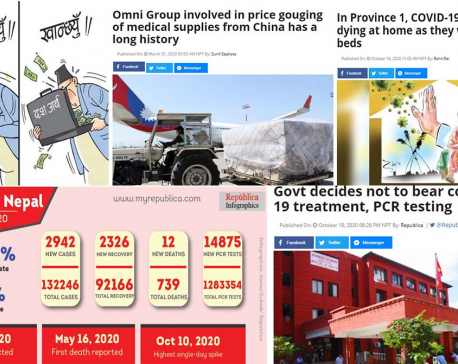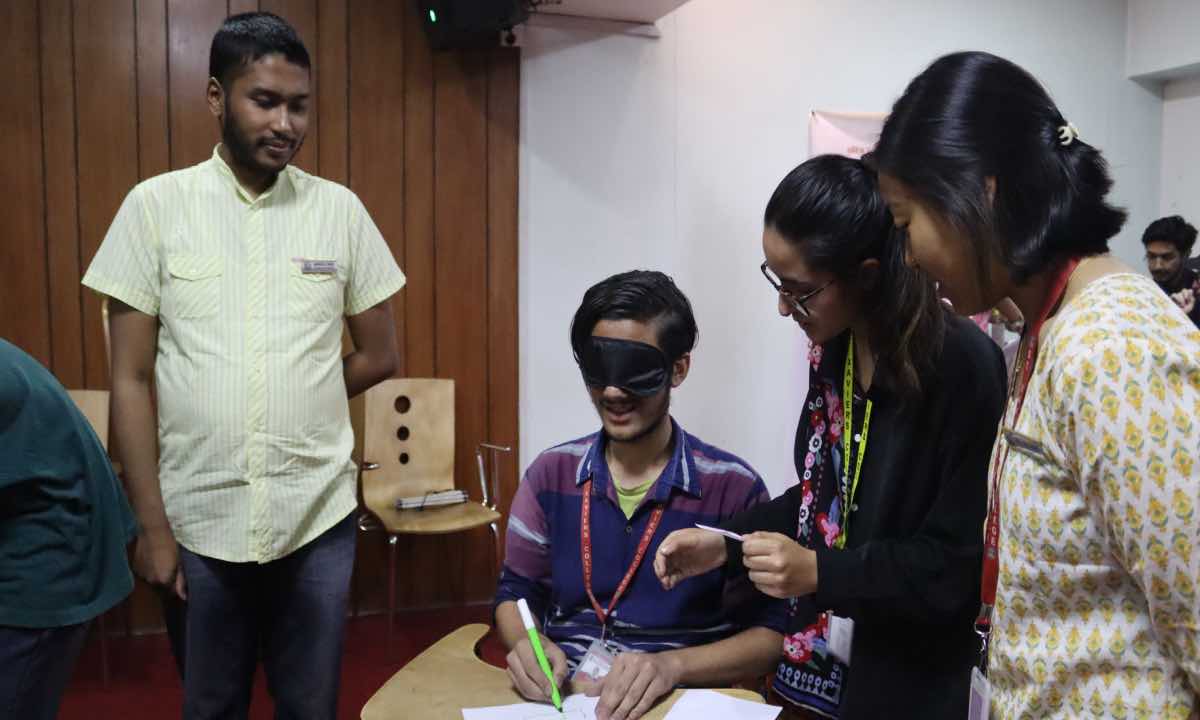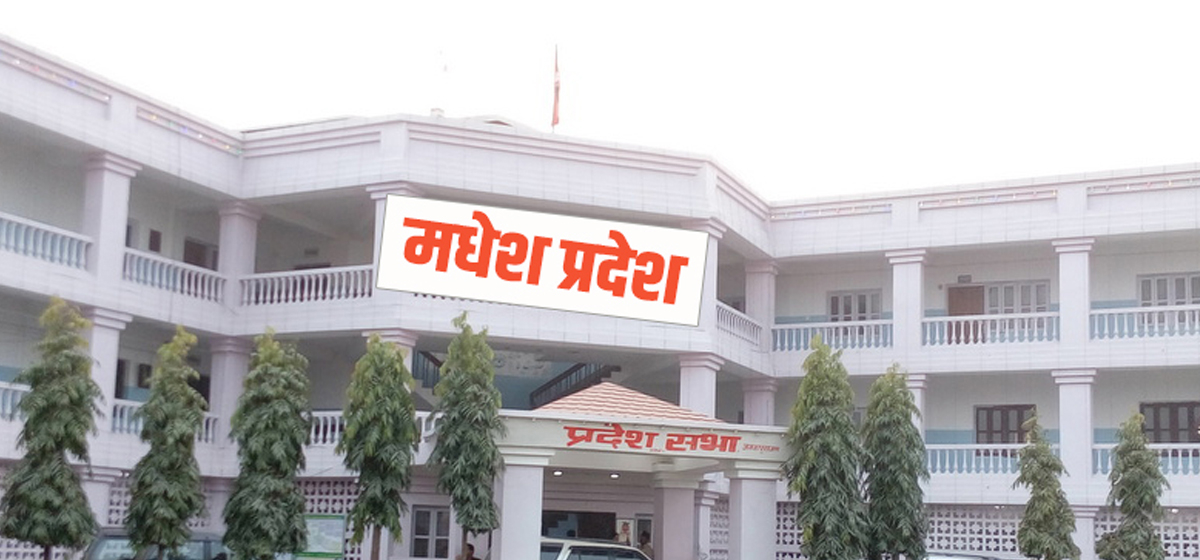
OR
How Oli government botched COVID-19 response
Published On: February 22, 2021 06:30 AM NPT By: Ashim Neupane | @ashimnep

KATHMANDU, Feb 22: “COVID-19 is like the flu. If contracted, we should drink hot water and sneeze out the virus.” Prime Minister KP Sharma Oli said during a National Assembly meeting on June 18 last year.
PM Oli made a number of false claims, without presenting facts. From falsely claiming that turmeric water cures COVID-19 to recommending steam therapy and drinking hot water, PM Oli downplayed the pandemic, which has already killed more than two million people worldwide, and more than two thousand in Nepal.
PM Oli and his government did not take the pandemic with the seriousness it deserved and went on to mishandle the pandemic.
Although the first case was reported in late January last year, the government reacted to the virus much later. The government imposed a nationwide lockdown to curb the spread of the virus only after the second case was tested on March 23.
More than a year after the first case was reported in Nepal, the pandemic has already killed more than 2,061 and infected 273,263 people.
“The government made a number of false moves right after the lockdown was enforced. Had the government been serious from day one, more lives could have been saved,” health experts say.
Ineffective lockdown
Though nationwide lockdown was enforced soon after the second case was reported, the government failed to trace, test, and isolate people. “In the initial stage of the lockdown, the government managed to trace, test, and isolate positive patients. But after the number of cases started to increase, the government slacked, resulting in the increase of COVID-19 cases,” Dr Sher Bahadur Pun, a virologist at the Shukraraaj Tropical & Infectious Disease Hospital, told Republica.
Likewise, even during the lockdown, people were moving from one place to another. “Also, people stuck on the Indian side entered Nepal without testing. And those who stayed in quarantine also did not follow proper health safety protocols,” says Pun, adding the government of Nepal failed to set up proper health desks in the border regions.
Dr Anup Subedee, a specialist of Infectious diseases at the HAMS Hospital, says that the government failed to effectively enforce the lockdown. “Though the lockdown was enforced to increase the ambit of tracing and testing, the government failed in doing so. The number of cases surged rapidly from the third week of the lockdown,” he said.
In the first week of the lockdown, the government was able to conduct 450 tests, which is an average of 64 tests a day.
Under testing
“There was a massive under testing. Despite the lockdown being enforced with a concept to trace, test, and isolate COVID-19 patients, the government failed to do so,” said Dr Subedee, adding that the government narrowed the criteria for testing, and the number of cases spiked.
During the lockdown, the government released a testing guideline to reduce the number of COVID-19 testing. The guideline also stated that those with no symptoms would not be tested for the virus. As per the guideline, one must have acute respiratory illness (fever and cough or fever and shortness of breath) to undergo testing.
When the guideline was released, more than 90 percent of COVID-19 patients were asymptomatic. “At a time when a huge number of patients were showing no symptoms, releasing such protocols increased the number of cases as testing criteria was narrowed,” said Dr Subedee.
Misinformation by Prime Minister and Health Ministry spokesperson
PM Oli shared a lot of misinformation about the virus. First, he said that the virus was just a flu, and then he claimed that drinking hot water would cure COVID-19. The PM also regularly bragged about Nepalis ‘strong immunity system’.
“The remarks by the Prime Minister were baseless and without scientific facts. At a time when there was very little information about the virus, PM’s baseless remarks made people believe him. It is not a fact that turmeric water cures COVID-19, but after the PM told the people to consume turmeric, people did so,” said Dr Baburam Marasini, former director of the Epidemiology and Disease Control Division (EDCD).
Likewise, Dr Jageshwor Gautam, spokesperson at the Ministry of Health and Population, also urged COVID-19 patients to visit the hospital only if they experience breathing difficulties. “After such remarks from the spokes, a lot of patients faced problems while staying at home in isolation. Patients only went to the hospital after experiencing breathing difficulties, but some patients already had COVID-19 pneumonia by that time,” said an official at the Health Ministry.
“Even the top officials at the health ministry took the pandemic lightly. They could not even refute the baseless remarks of the prime minister publicly,” the official added.
Govt gave up on testing and contact tracing
Though the contact tracing was effective in the initial phase of the lockdown, the government gave up on testing and contact tracing after the daily cases started to surge.
First, the government introduced a policy to reduce the number of testing. “It was not possible to contact trace when the government was not testing asymptomatic patients. The concept of contact tracing is testing everyone who comes in contact with infected people,” Dr Marasini said.
“The government gave up contact tracing and testing. The number of cases spiked rapidly. At one time, more than 5,000 cases were recorded across the country,” said Dr Pun, also adding that the government did not even have information about those coming to Nepal from India.
Health experts also said that the government’s apathy towards COVID-19 testing was the major reason behind Kathmandu becoming the hotspot. “After the lockdown was lifted, people came to Kathmandu in a huge number, but the government failed to gather information of the returnees. As a result, the capital became a hotspot,” said Dr Pun.
Lack of coordination
Even though the number of cases was surging rapidly, there was no coordination between the authorities concerned and the tiers of the government. The government had formed a COVID-19 Crisis Management Center (CCMC) to combat the virus. But there was no coordination between the government and the CCMC.
Even the COVID-19 data of the CCMC and the Health Ministry is different. “The discrepancy in the data of the health ministry and the CCMC also shows that lack of coordination between the authorities entrusted to combat the pandemic,” said Dr Marasini.
“When the number of cases was increasing, the federal and provincial governments were not receiving the information from the local government on time. Also, the local governments did not have proper data of infected people,” Dr Marasini added.
Likewise, the provincial and federal governments also failed to send the necessary budget to local governments to run quarantine and isolation facilities. “All these lapses only increased COVID-19 cases,” he added.
Poor quarantine and isolation centers
More than six people died in the quarantine facilities across the country. They were tested positive for the virus only after they died.
Likewise, some people also committed suicide in quarantine facilities.
“People shared beds, towels, and washrooms. The government failed to provide even basic services at the quarantine facilities. Was such a situation helping to curb the spread of coronavirus in Nepal?” Dr Pun, who is a virologist at the Teku Hospital, told Republica.
“All the deaths in quarantine facilities could have been avoided had there been health workers and proper ambulance services in place. Patients died as there were no basic facilities in the quarantines,” he added.
As per the guidelines, health workers should be present at quarantine facilities round the clock, but the ground reality was different. There were no doctors, ambulances, and patients were not even getting nutritious diet.
Corruption and political instability
Although the government has been sluggish in COVID-19 response, the Ministry of Health and Population has claimed that more than 20 billion rupees has been spent.
Demanding the government be transparent and accountable, youths through social media started a campaign--Enough is Enough. Thousands of youths took to the streets in the midst of the pandemic.
“Had the government been accountable and transparent, no one would come to the streets in the midst of the pandemic,” said a campaigner.
Likewise, while importing health equipment from China, the government awarded the contract to Omni Group. But the group was found to have charged an exorbitantly higher price for the medical equipment. Later, the Public Procurement Monitoring Office (PPMO) blacklisted the company, stating that the group will not be qualified for any public bidding for a year.
After the Prime Minister dissolved the lower house in late December, protests erupted across the country. “The number of cases was decreasing, but the recent series of protests might bring the second wave in Nepal,” said Dr Pun.
“People and even the government are acting like there was no pandemic in the country. Political parties are organizing protests across the country, and people are participating without following health safety protocols,” said Dr Pun.
You May Like This

As Oli government limits its role to counting deaths during the greatest public health crisis, people are dying at an alarming rate
Experts say the government has decided to shred the constitution ... Read More...

Failed leadership
This is how Oli-led government is failing the country and the people. ... Read More...

India’s virus caseload now 4th highest in world
NEW DELHI, June 12: India’s coronavirus caseload has become the fourth-highest in the world, overtaking Britain, by adding 10,956 new... Read More...







Just In
- Forest fire destroys 13 houses in Khotang
- First meeting of Nepal-China aid projects concludes
- Lungeli appointed as Minister for Labor and Transport in Madhesh province govt
- Bus knocks down a pilgrim to death in Chitwan
- One killed in tractor-hit
- Karnali Chief Minister Kandel to seek vote of confidence today
- Chain for Change organizes ‘Project Wings to Dreams’ orientation event for inclusive education
- Gold price decreases by Rs 200 per tola today












Leave A Comment